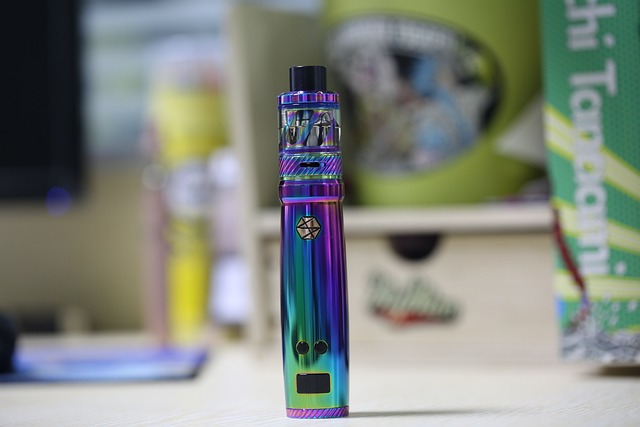Don’t Trip by Dozi: Navigating the World of E-Cigarettes
Introduction: Understanding the E-Cigarette Landscape

In recent years, e-cigarettes have surged in popularity, carving out a significant niche in the market as an alternative to traditional smoking. However, for many new users, the plethora of options and information can be overwhelming. That’s where “Don’t Trip by Dozi” comes into play—a guide designed to help users navigate the complexities of vaping while avoiding common pitfalls. With a focus on education and clarity, this article will address various aspects of e-cigarettes, from their components to safety concerns and the latest trends.
What are E-Cigarettes?
E-cigarettes, or electronic cigarettes, are handheld devices that convert liquid nicotine into vapor. Unlike traditional cigarettes, they do not contain tobacco. Instead, the liquid—often referred to as “e-liquid”—typically contains nicotine, flavoring agents, and other chemicals. Users inhale the vapor, simulating the act of smoking without the harmful effects of combustion.
Table 1: Comparison of E-Cigarette Components
| Component | Description |
|---|---|
| Battery | Power source for heating the e-liquid. |
| Atomizer | Heats e-liquid to produce vapor. |
| Tank | Holds the e-liquid. |
| Drip Tip | Part from which the user inhales the vapor. |
Types of E-Cigarettes
The e-cigarette market is diverse, with several types of devices available. Trends include:
– Cigalikes: Resemble traditional cigarettes; user-friendly, often disposable.
– Vape Pens: Slightly larger, refillable tanks allow for flavor customization.
– Mods: Highly customizable devices offering advanced settings and larger batteries for seasoned users.
– Pod Systems: Compact and easy to use, popular for their convenience and portability.
Choosing the right type of e-cigarette is crucial, as each serves different user preferences.
Health Considerations: Are E-Cigarettes Safe?
While e-cigarettes are generally considered less harmful than traditional cigarettes, they are not without risks. E-liquids can contain various harmful chemicals and flavoring agents that may pose health issues. Recent studies suggest potential links between vaping and lung diseases, prompting ongoing research into the long-term effects of e-cigarette use.
Table 2: Common Concerns About E-Cigarettes
| Health Concern | Details |
|---|---|
| Lung Health | Some cases of lung injury linked to vaping. |
| Nicotine Addiction | Nicotine in e-liquids can lead to dependency. |
| Cardiovascular Risks | Potential for increased heart rate and blood pressure. |
| Gateway to Smoking | Concern that vaping may lead to traditional smoking. |
Choosing the Right E-Liquid
Selecting the appropriate e-liquid is one of the most crucial aspects of becoming a successful vaper. Factors to consider include flavor, nicotine strength, and composition. Beginners may start with a higher nicotine concentration, gradually transitioning to lower levels as they adapt.
Types of E-Liquid Composition:
– PG (Propylene Glycol): Thinner liquid, provides throat hit akin to smoking.
– VG (Vegetable Glycerin): Thicker liquid, produces more vapor but less throat hit.
– Blend: A combination of both, balancing throat hit and vapor production.
Legislation and Regulation of E-Cigarettes
Regulation of e-cigarettes varies greatly between countries. While some regions have stringent regulations, others take a more relaxed approach. The legal age for purchasing e-cigarettes also differs, posing challenges for compliance and public health. Notably, the FDA oversees e-cigarette regulation in the U.S., enforcing rules about sales, manufacturing standards, and marketing strategies.
Common Misconceptions About Vaping
The rise of e-cigarettes has resulted in numerous myths that can lead to misunderstandings. It’s essential to clarify these misconceptions to ensure informed choices:
1. Vaping is completely safe: While less harmful than smoking, vaping still poses health risks.
2. E-cigarettes are only for quitting smoking: Many use e-cigarettes recreationally, not solely as a cessation tool.
3. All e-liquids are the same: Quality and ingredients can vastly differ among brands and products.
Finding the Right E-Cigarette Community
Joining an e-cigarette community can be a great way to gain insights, support, and recommendations. Many online forums and social media groups offer invaluable resources, where users share their experiences, tips, and products tested in the real world.
Frequently Asked Questions
What nicotine strength should I choose when starting to vape?
When starting to vape, beginners typically choose nicotine strengths of 3mg to 18mg, depending on their previous smoking habits. It’s advised to start higher and reduce gradually as you adjust.
Can vaping help me quit smoking?
Many users report that vaping has helped them quit smoking. However, individual results may vary, and it’s essential to approach this as part of a broader cessation strategy.
Are e-cigarettes more affordable than traditional cigarettes?
In the long run, e-cigarettes can be more cost-effective than traditional cigarettes, especially for daily smokers. However, initial investment in the device and ongoing purchases of e-liquid and coils can add up.
In conclusion, navigating the world of e-cigarettes can be intricate, but with the right information at your fingertips, you can make informed decisions. Whether you are a newcomer looking to explore or a seasoned user wanting to enhance your experience, understanding the landscape of e-cigarettes is crucial for optimal enjoyment and safety.





